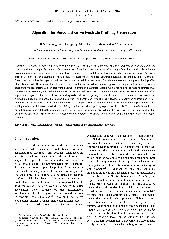摘要
The algorithms for feedrate profile generation, such as linear and S-curve profiles, have been widely used in machinery controllers, and these algorithms can greatly improve the smoothness of motion. However, most of the algorithms lead to the discontinuous acceleration/deceleration and jerk, or high jerk levels, which is very harmful to machine tool or robot in most occasions. This paper presents a smooth S-curve feedrate profiling generation algorithm that produces continuous feedrate, acceleration, and jerk profiles. Smooth jerk is obtained by imposing limits on the first and second time derivatives of acceleration, resulting in trapezoidal jerk profiles along the tool path. The discretization of smooth S-curve feedrate is realized with a novel approach that improves the efficiency without calculating the deceleration point in each sampled time. To ensure that the interpolation time is a multiple of the value of sampled time, the feedrate, acceleration, jerk, and jerk derivative are recalculated. Meantime, to improve the efficiency, the interpolation steps of all regions are computed before interpolation. According to the distance of trajectory, the smooth S-curve acceleration and decelerations are divided into three blocks: normal block, short block type-I, and short block type-II. Finally feedrate discretization of short block type-I and type-II is obtained with considering the efficiency. The proposed generation algorithm is tested in machining a part on a five axis milling machine, which is controlled with the CNC system for newly developed high-speed machine tools. The test result shows that the smooth S-curve approach has the smoother feedrate, acceleration, deceleration, and jerk profiles than S-curve. The proposed algorithm ensures the automated machinery motion smoothness, and improves the quality and efficiency of the automated machinery motion planning.
- 出版日期2011-3
- 单位北京航空航天大学
